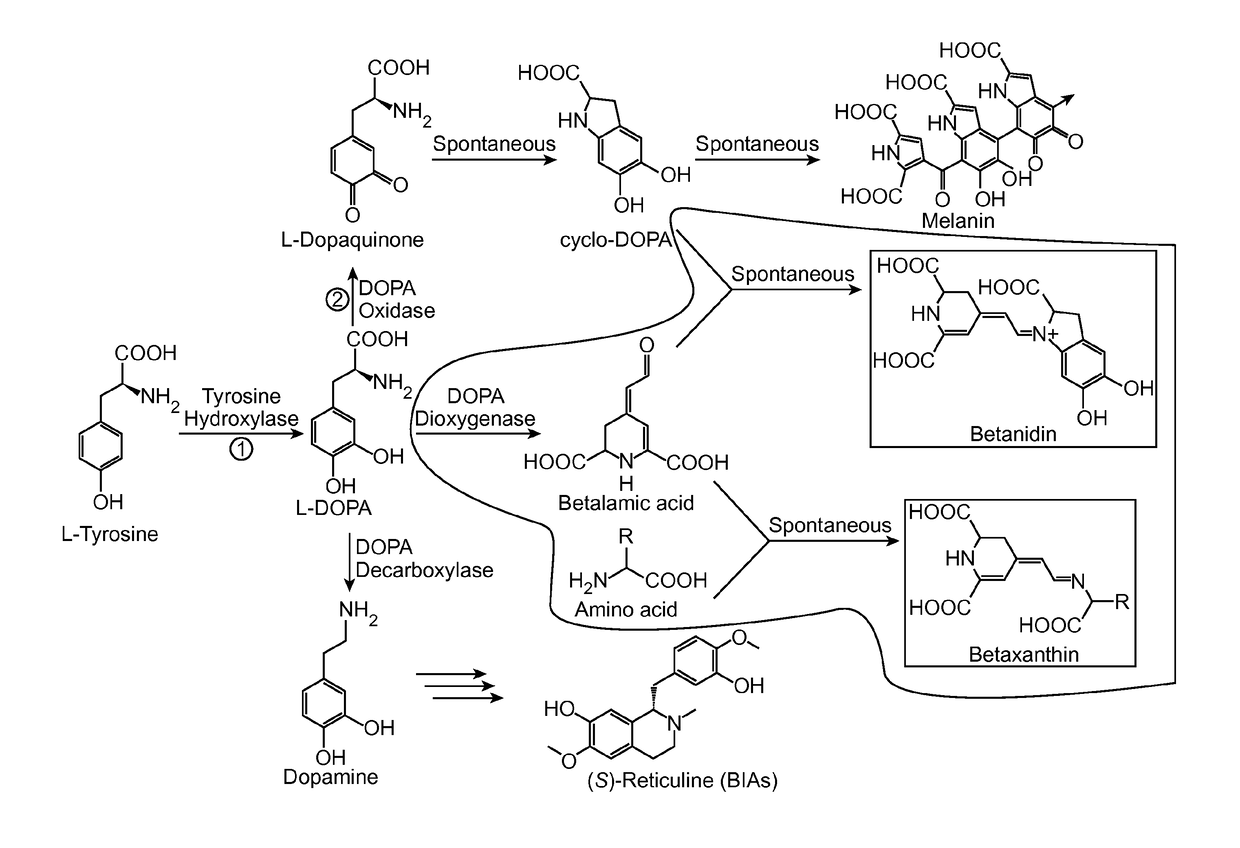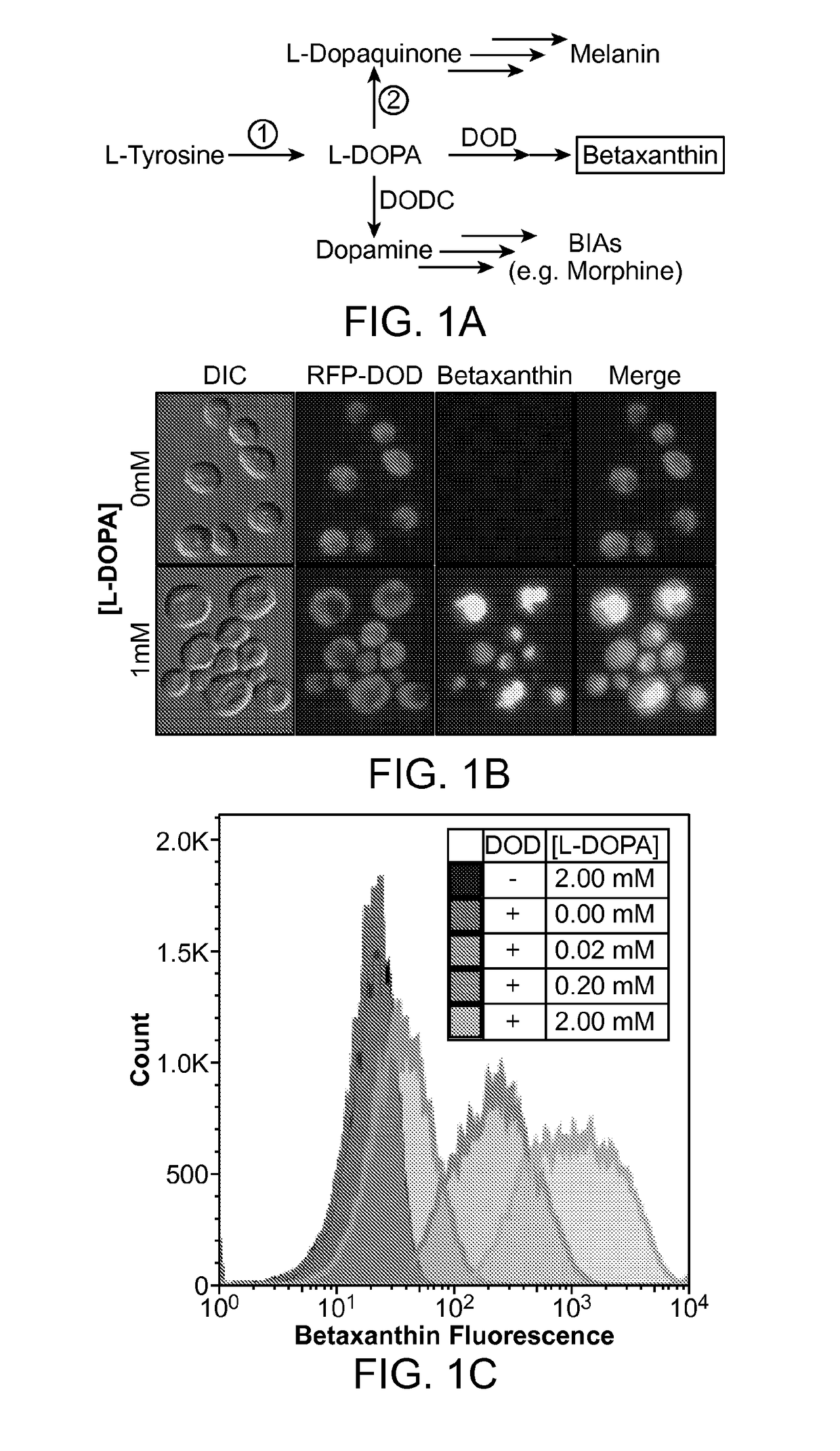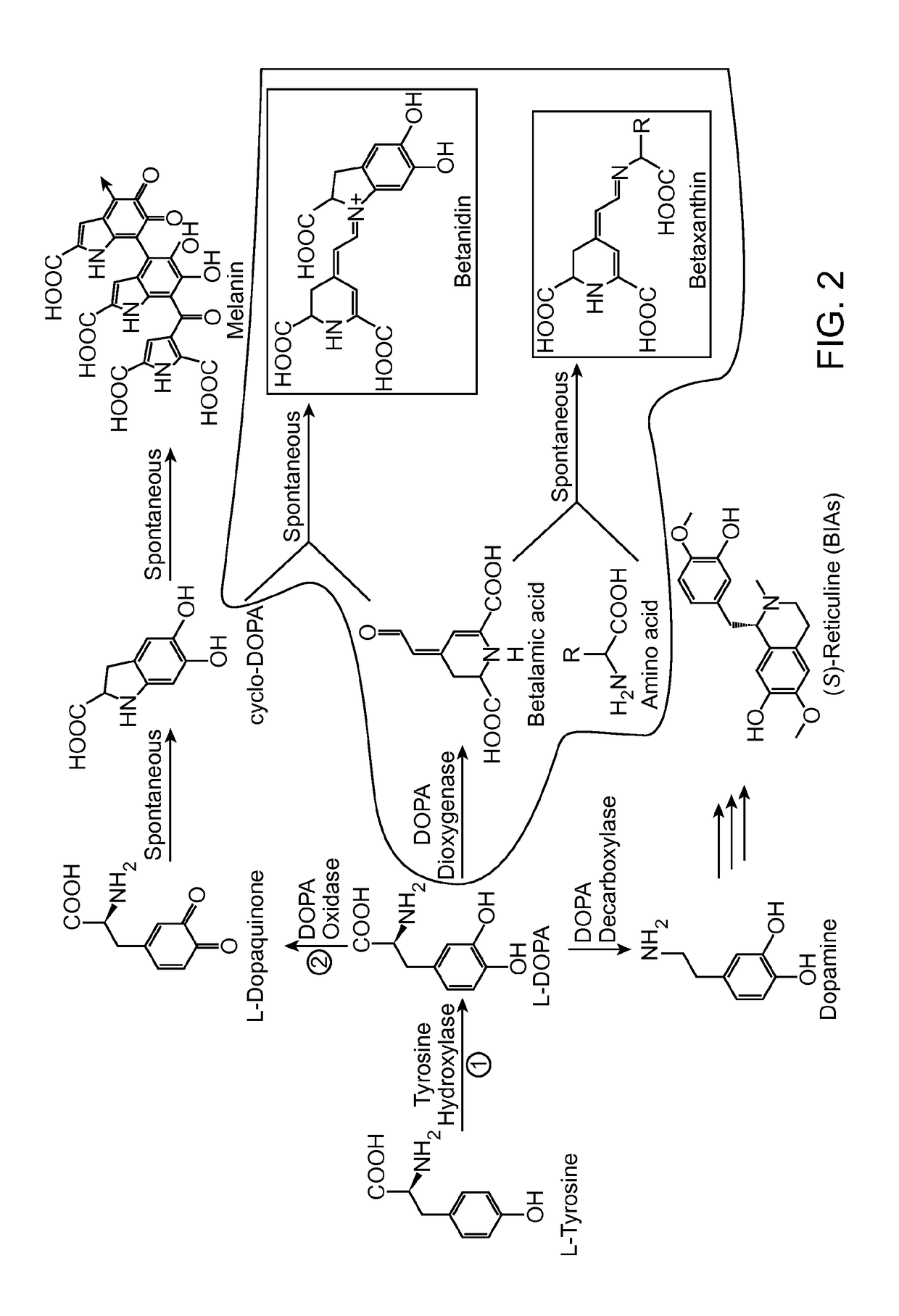Tyrosine hydroxylase variants and methods of use thereof
a technology of hydroxylase and tyrosine, which is applied in the field of tyrosine hydroxylase variants, can solve the problems of hindering the efforts of engineering efforts to produce these compounds in useful quantities in yeast by microbial fermentation, and achieve the effects of reducing l-dopa levels, increasing l-dopa levels, and increasing enzymatic activity
- Summary
- Abstract
- Description
- Claims
- Application Information
AI Technical Summary
Benefits of technology
Problems solved by technology
Method used
Image
Examples
example 1
nt of an Enzyme-Coupled L-DOPA Biosensor
[0241]A long-standing inability to achieve L-tyrosine hydroxylation to L-DOPA in yeast prompted the development of an enzyme-coupled biosensor for L-DOPA that could be used to quickly screen candidate tyrosine hydroxylases for activity. DOPA dioxygenase (DOD) is a plant enzyme that converts L-DOPA into a yellow, highly fluorescent family of pigments called betaxanthins in members of the order Caryophyllales (FIG. 1A) (Sasaki et al. 2009). These betaxanthins, all of which have similar optical properties, are the result of a spontaneous reaction between free amines and betalamic acid produced by DOD (FIG. 2)(Gandía-Herrero et al. 2005). For simplicity, this entire family of molecules is referred to simply as betaxanthin.
[0242]A DOD variant from the flowering plant Mirabilis jalapa was expressed in yeast. It was found that cells grown in media supplemented with L-DOPA produced enough betaxanthin to be easily detected by eye in both the supernatan...
example 2
n and Characterization of Variant Tyrosine Hydroxylases
[0247]Error-prone polymerase chain reaction (PCR) was performed to generate a library of CYP76AD1 mutants that was transformed into a yeast strain expressing DOD. This mutant library contained approximately 200,000 members with an average mutation rate of approximately 4 mutations / gene. The difference in betaxanthin production between library clones was sufficiently large that obvious differences between colonies could be detected by eye. 17 of the highest betaxanthin producers were visually identified, and selected for sequence analysis. Six of the 17 mutants contained an F309L missense mutation; among those with this mutation, there were 2 distinct genotypes (FIG. 4B).
[0248]The set of hits was narrowed to six by removing duplicate genotypes and any mutant that showed less than 1.5-fold improvement in betaxanthin production upon isolation and retransformation into the L-DOPA sensor base strain (FIG. 4A-4B). These six mutants we...
example 3
n of NLDS and Norcoclaurine
[0255]Norlaudanosoline (NLDS) and norcoclaurine production was detected in yeast genetically modified to express CYP76AD1 (W13L / F309L) and human monoamine oxidase (MAO). Cells were grown in culture medium containing 0 mM, 0.1 mM, 1 mM, 10 mM, or 100 mM dopamine. As shown in FIG. 8A, a yeast strain genetically modified to express CYP76AD1 (W13L / F309L) produced NLDS with only 1 mM dopamine in the culture medium; without expression of CYP76AD1, no NDLS was detected at 1 mM dopamine in the culture medium. As shown in FIG. 8B, a yeast strain genetically modified to express CYP76AD1 (W13L / F309L) produced norcoclaurine with only 1 mM dopamine in the culture medium; without expression of CYP76AD1, no norcoclaurine was detected at 1 mM dopamine in the culture medium.
Example 4: Identification of Variants that Provide for Increased Tyrosine Production
[0256]The L-DOPA biosensor assay described in Example 1 can be used to identify variants in genes upstream of L-DOPA p...
PUM
| Property | Measurement | Unit |
|---|---|---|
| volumes | aaaaa | aaaaa |
| volumes | aaaaa | aaaaa |
| temperature | aaaaa | aaaaa |
Abstract
Description
Claims
Application Information
 Login to View More
Login to View More - R&D
- Intellectual Property
- Life Sciences
- Materials
- Tech Scout
- Unparalleled Data Quality
- Higher Quality Content
- 60% Fewer Hallucinations
Browse by: Latest US Patents, China's latest patents, Technical Efficacy Thesaurus, Application Domain, Technology Topic, Popular Technical Reports.
© 2025 PatSnap. All rights reserved.Legal|Privacy policy|Modern Slavery Act Transparency Statement|Sitemap|About US| Contact US: help@patsnap.com



